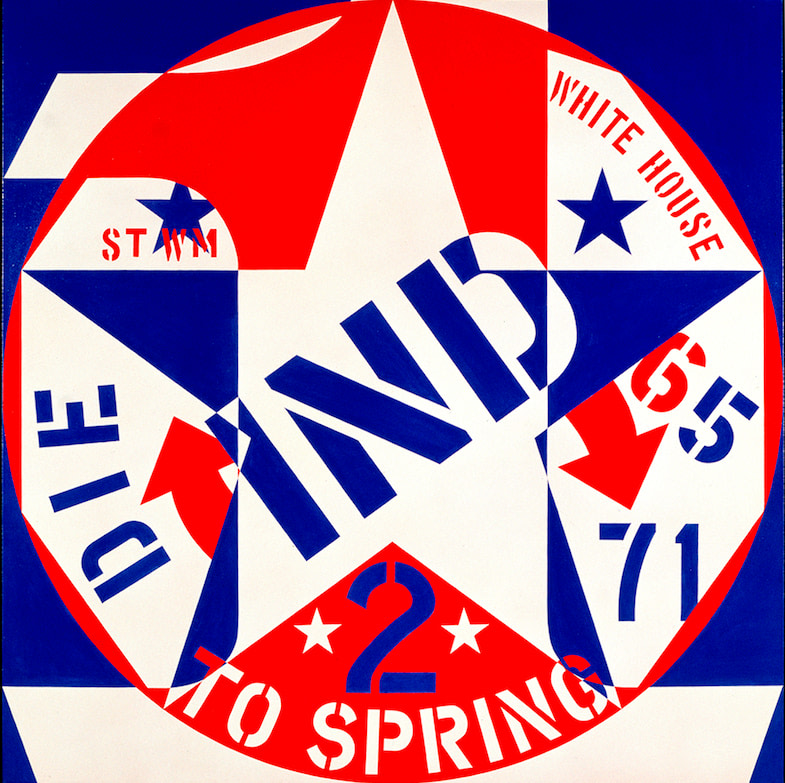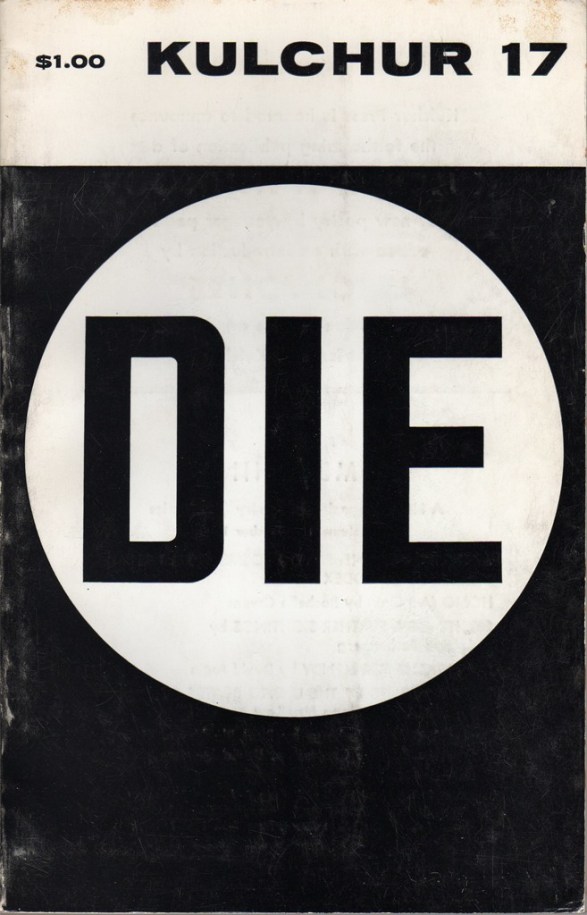Robert Indiana’s Decade: Autoportrait paintings are a series of autobiographical portraits that he began in 1971. The works, which the artist considered a throwback to his American Dream series, consist of three groups of ten paintings in different sizes: 24-, 48-, and 72-inches. The 24- and 48-inch works made their debut in Robert Indiana: New Paintings and Sculpture, held at the Galerie Denise René, New York, November 22–December 30, 1972.
The series provides a portrait of his life in the 1960s, and includes references to important names, places, and events. The numeral "2" and the text "To Spring" in Decade: Autoportrait 1965 reference Indiana's move from Coenties Slip to a loft in a former luggage factory at 2 Spring Street on the southwest corner of Bowery and Spring Streets. "St. William" refers to William Katz, a graduate student in engineering at Johns Hopkins University, whom Indiana met in January while participating in “Art Now,” a lecture series at the Baltimore Museum of Art. Katz would move in with in Indiana later that year.
"White House" is a reference to Indiana's participation in The White House Festival of the Arts, in which his painting The Calumet was included. The festival took place on June 14, 1965, and the works were subsequently exhibited to the general public at the National Gallery of Art. "Die," one of the three-letter words that appears frequenly in Indiana's work, is a reference to the death of his father that December. It can also be read as a reference to the Die panel of his Eat/Die painting, which was reprodueed on the cover of the Spring issue of the journal Kulchur.



